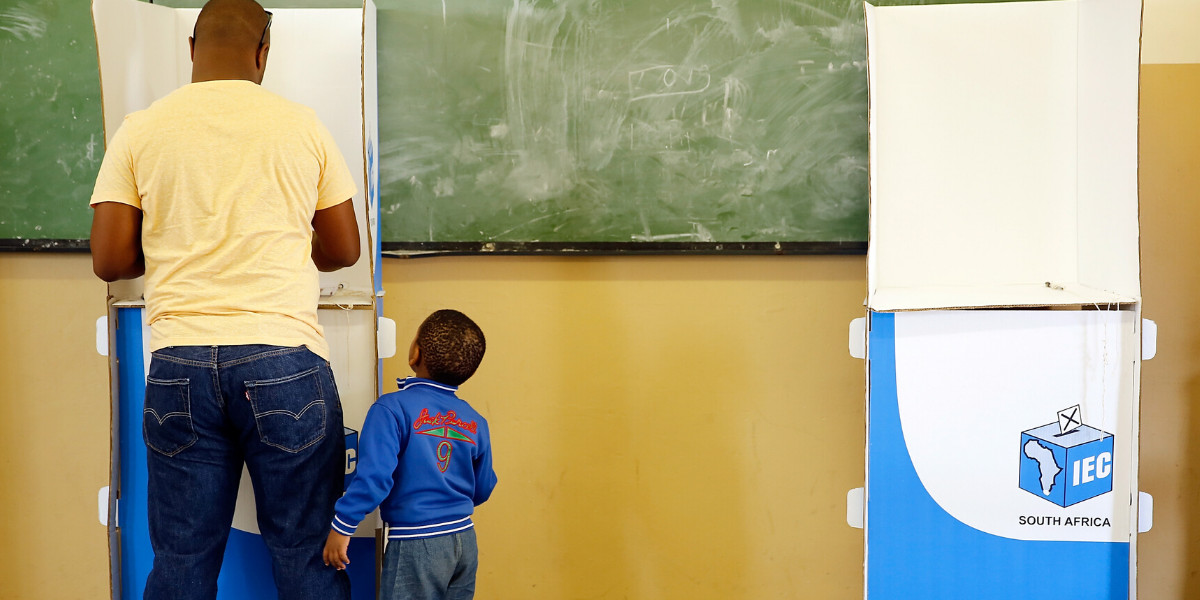The health risks associated with traditional, in-person voting have forced the Independent Electoral Commission (IEC) to attempt to balance this with its constitutional electoral mandate. Has the time come for the country to seriously consider investing in internet voting?
SA’s current electoral process allows registered voters to cast a vote on a ballot paper by selecting a political party, using a pencil, at a ballot box. Some previously documented challenges with this method include the cost of hard-copy ballot papers. In the 2019 elections, over 50 million ballot papers were printed using about 40 tons of paper. Printing out ballots is also environmentally unfriendly. A second challenge is that people with disabilities may find casting a vote in person difficult, depending on their disability. Thirdly, this process lends itself to fraud: for example, sealed ballot papers were found in envelopes before the commencement of the 2009 general elections in the KwaZulu-Natal province. Lastly, the public often have to queue in extremely long lines to physically cast their vote.
Fast forward to 2021, a far greater challenge is preventing the spread of COVID-19 when voters have to queue at voting stations if adequate social distancing is compromised. SA is now scheduled to have its local government elections on 1 November 2021. This is despite recommendations by former Deputy Chief Justice Dikgang Moseneke, and an unsuccessful court application by the IEC to postpone elections to 2022.
One way in which the abovementioned challenges can be solved is through the introduction of internet voting. Internet voting (also referred to as web-based voting or remote voting) is the use of a technological gadget (such as a a cellphone or laptop), connected to the internet, to cast a vote. This method of voting can be done remotely with an individual using login details and a password registered by the voting application server. Canada, France, Switzerland and Estonia have all used remote internet voting for elections or referenda. Estonia is a compelling example as it is the only country to offer internet voting to the entire electorate, while other countries have used it partially. The country successfully initiated a pilot project for the 2005 municipal elections and internet voting has been offered in all subsequent elections, with the number of online voters increasing with every election.
The South African government has been engaging in various forms of e-governance since 1994. One example is the introduction of e-filing to facilitate the electronic submission of tax returns by the South African Revenue Service. Moreover, the COVID-19 pandemic has accelerated the use of online or electronic platforms for shopping, education and working remotely. This presents the country and the IEC with a unique opportunity to consider, investigate and strategically plan for the use of internet voting in the near future. Additionally, internet voting can boost participation of young people who may be unsatisfied with traditional voting processes. It is well documented that youth voter registration and turnout in the 2019 general elections was poor. One can argue that young people would be even more receptive to internet voting now due to the switch to online learning over the past 18 months.
Internet voting reduces the impact on the environment by eliminating the production of physical ballot papers. The finances used for the printing and paying IEC staff working at polling stations can be reinvested towards the establishment of internet voting software. An internet-based voting system could also assist people with disabilities as it offers voice-activated options. Cases of fraud and system malfunction can be reduced by investing in advanced software with digital verification processes that require one’s ID number, physical address, cellphone number and user-generated passwords. Internet voting also allows one to cast a vote from home, which minimises the risks associated with the current COVID-19 pandemic.
Despite all the opportunities and advantages presented by internet voting, challenges do exist. One of the greatest challenges is the ‘digital divide’. Internet voting would only be accessible to people with digital devices. There are also risks of system malfunction, voting more than once, and hacking. Furthermore, there is also the question of financial resources to set up the internet systems.
As a large portion of the population already has access to private electronic devices, internet voting may require less funding than other forms of electronic voting. Furthermore, to bridge the digital divide, the government could give disadvantaged communities access to portable digital devices that could be returned after use. These could be transported to various communities by IEC staff or volunteers, who would supervise the use of the device for voting and its subsequent return. This form of voting allows for efficient casting and tallying of votes. Advanced internet server technologies can be used to enhance security features. One can further argue that if citizens are able to use internet banking and online shopping methods, then the same logic and security features can be applied for voting purposes. It is also worth noting that the IEC has already initiated online voter registration this year, which can provide a framework for how a similar system can be adopted for actual voting.
This would require comprehensive planning, civic education and strategic budgeting. Investing in internet voting must be included in the national budget to devise a detailed financial plan of action. Although internet voting is not feasible for the November local government elections, it is definitely worth considering for subsequent polls.








